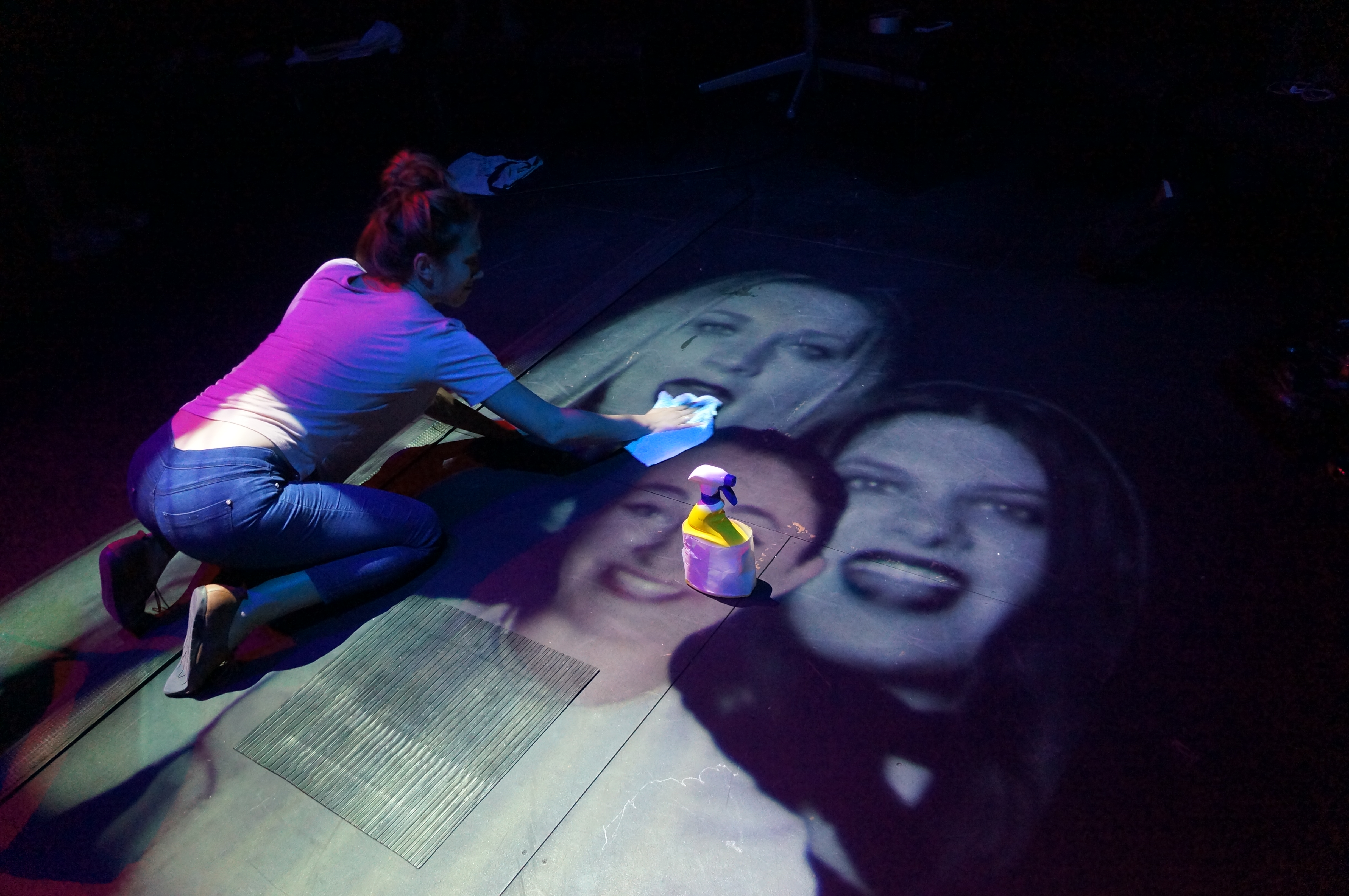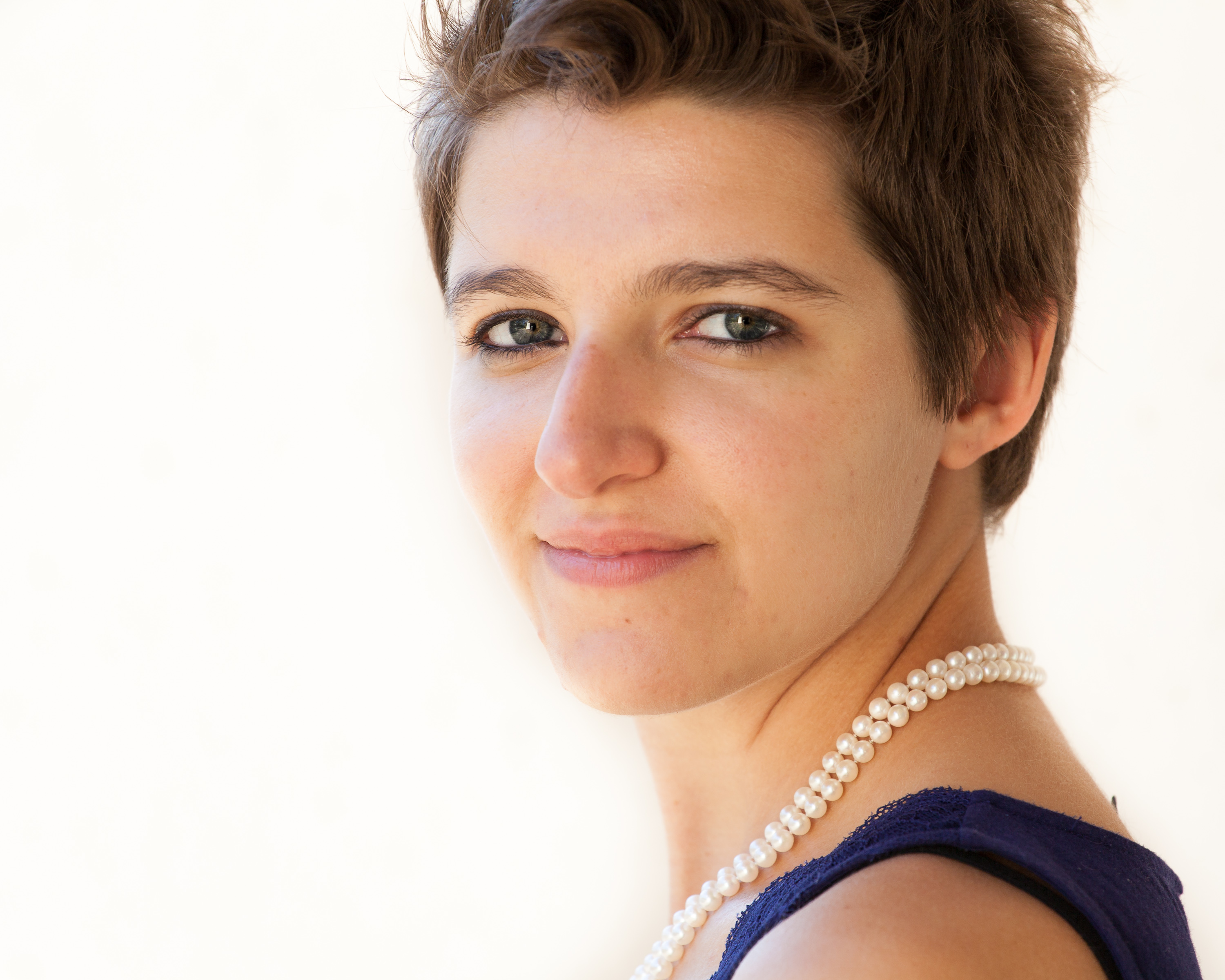Old Becomes New Again with IDEAS Performance 'Radiance: (A Witch Hunt)'
San Diego, Calif., June 19, 2014 — The Qualcomm Institute’s Black Box Theater at the University of California, San Diego has served many futuristic roles in its decade-long existence: As a theater for cutting-edge films, as a venue for telematic dance performances, as a concert hall for experimental music.
|
But from 6 to 7 tomorrow night, the Black Box will transform back in time to a cardboard kitchen straight out of the 1950s, complete with rangetop, refrigerator and disillusioned housewife.
The theatrical set is the backdrop for “Radiance: (A Witch Hunt)” the latest performance in the Initiative for Digital Exploration of Arts and Sciences (IDEAS) series. The year-long series is designed to encourage all types of artists and technologists to take advantage of the advanced audio-visual facilities, services and personnel at the Qualcomm Institute, which is the UC San Diego division of the California Institute for Telecommunications and Information Technology (Calit2). IDEAS performances are free and open to the public.
For UC San Diego MFA-Playwriting candidate Kristin Idaszak and MFA-Directing candidate Sarah Wansley, the staged reading of a portion of Idaszak’s play is a way of exploring how live performers interact with media performers – in this case, a trio of ‘housewife witches’ in the tradition of MacBeth. In addition to physically taking the stage, the wtiches are also pre-recorded and at times projected onto the cabinets, the freshly mopped kitchen floor and on a bottle of spray cleaner using a mobile, intelligent light fixture known as a DL1 projector that is mounted to the theater’s overhead tension grid.
“It’s incredibly exciting to be able to play with this idea of the kitchen becoming alive, this inanimate space becoming something menacing,” says Idaszak, who also considers Euripedes’ “Medea,” the confessional poetry of Anne Sexton and Sylvia Plath, Facebook COO Sheryl Sandberg’s “Lean In” and Betty Friedan’s “The Feminine Mystique” to be inspirations for the piece.
“There’s an image in ‘The Feminine Mystique’ that really resonates for me, the idea of the home being the ‘comfortable concentration camp,'” she adds. “Friedan herself was writing shortly after World War II, but what was shocking to me as a 23-year-old was how current that book felt. The viscerality and extremeness of that idea feels really right to me.”
|
The play itself investigates the Medea myth and witch hunts from the ancient past to the present day as it traces the life of Maddie, the daughter of a German nuclear physicist who marries an American officer and ends up feeling like a suburban Cold War prisoner. The staged reading of the play – with sound, video and a panel discussion moderated by IDEAS Director Shahrokh Yadegari – is a culmination of a five-day residency at the Qualcomm Institute.
“We wanted the imagery of the witches to appear in the kitchen,” says Wansley, “because we’re imagining them on some level to be the voices in Maddie’s head, or the voices of women throughout history, suffocating her and pushing her toward an act of violence. The ancient Greek choruses had percussion and dancing, and we also wanted to make these choral odes theatrical in contemporary way.
“One sub-theme in the play,” she adds, “is technology and whether technology itself gives us increased power for evil or whether we’ve always had that. But technology also gives us the responsibility to know how to use it.” Wansley notes that the play takes place during a time when “the atomic bomb was very much present,” much like the drones and drone strikes of the contemporary era, which are also alluded to in the work.
|
Idaszak adds that the incongruity of Sheryl Sandberg juxtaposed with Betty Friedan and atomic bombs juxtaposed with drone strikes “go hand-in-hand with the heightened theatricality that we’re interested in exploring.”
“Things do feel intentionally pastiched, but putting in these contemporary references felt necessary,” she says. “We are interested in the elasticity of time and wanted to push that further. It will leave the audience wondering, ‘Why is this 1950s housewife quoting Sheryl Sandberg’ or ‘Why is she delivering a speech about witchcraft that’s really about terrorists?’ That anti-naturalism is really the heart of the aesthetic of this piece. It felt urgent to tell this story about how the more things change, the more they stay the same.”
Creative Team
Kristin Idaszak – Playwright
Sarah Wansley – Director
Lily Bartenstein – Scenic/Media Designer
Bo Tindell – Lighting Designer
Melissa Ng – Costume Designer
Cast
Emily Shain – Maddie
Walker Hare – Jason
Luis Vega – Creon
Jenny Grober – Jane
Hannah Tamminen – Anne/Housewife/Witch
Rosie Byrne – Housewife/Witch
Suzy Snowden – Housewife/Witch
Related Links
Media Contacts
Tiffany Fox, (858) 246-0353, tfox@ucsd.edu



